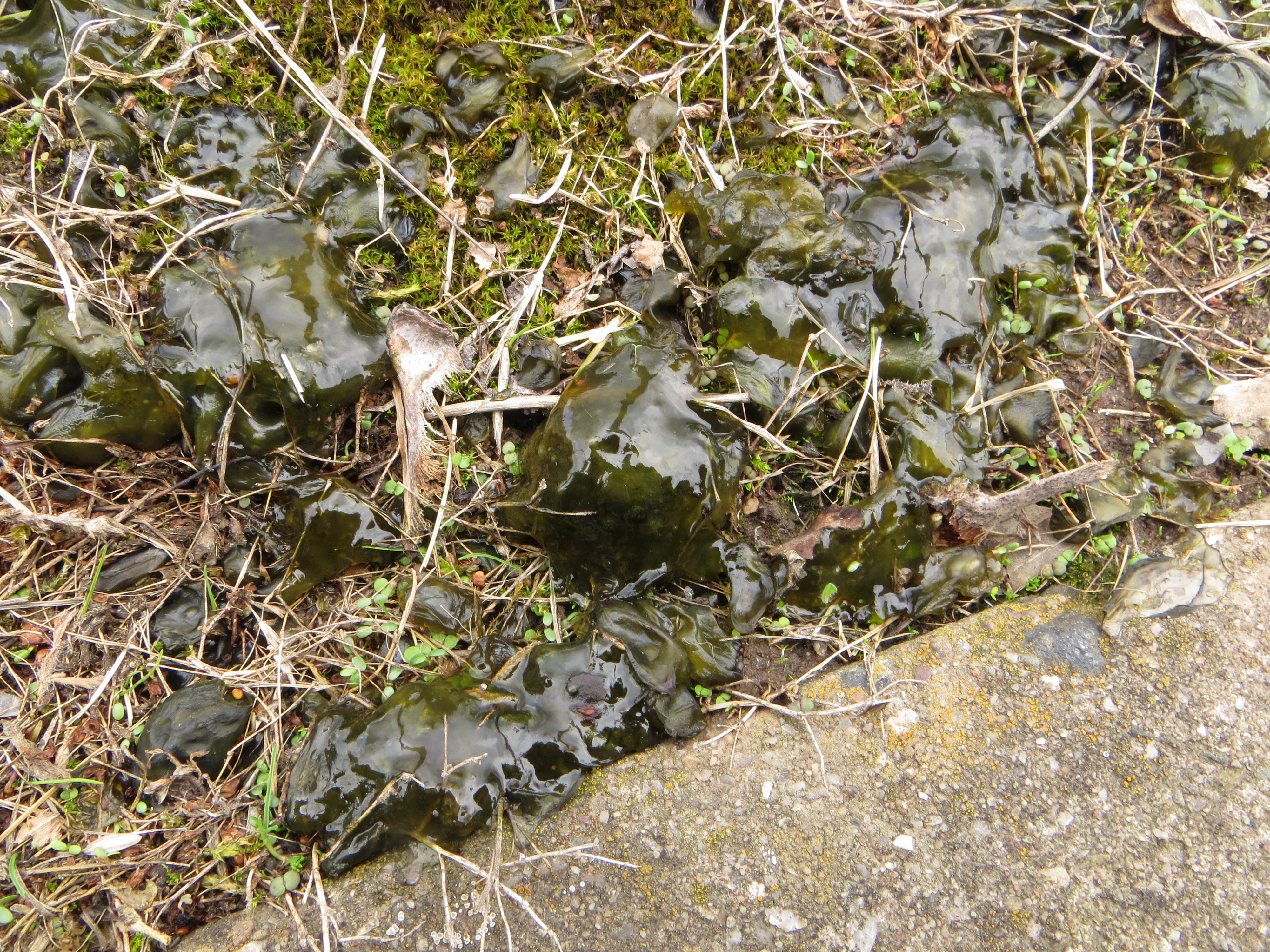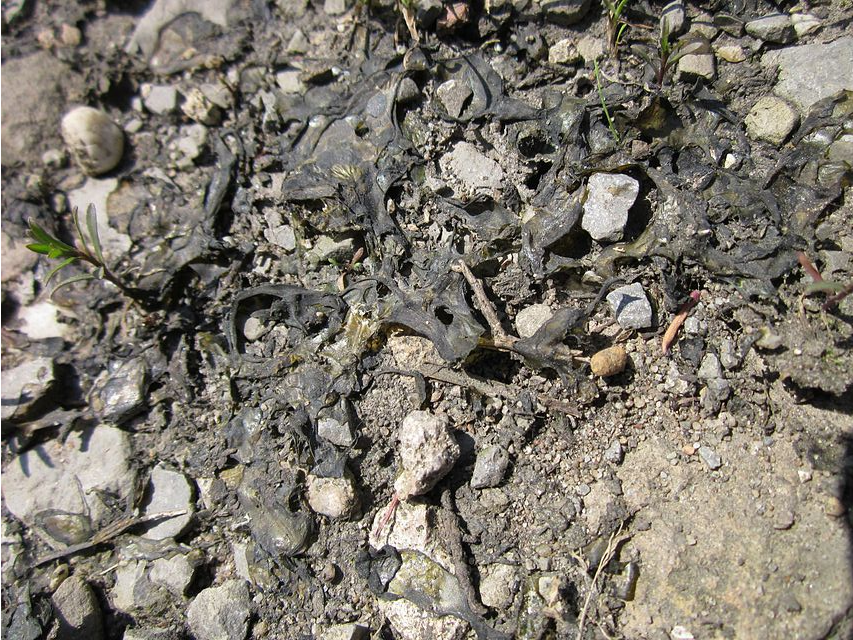Nostoc: The mysterious green jelly on your lawn
An organism older than the dinosaurs could be living in your lawn! Nostoc is not easy to control. Cyanobacteria have been around for about 3.5 billion years and have survived conditions ranging from volcanoes to the Ice Age.

Within the category of “What is it?” lives a strange-looking organism called by many names. Referred to as star jelly or star slime, these names harken back to beliefs that this organism had fallen from the dust of shooting stars, whereas the name witch’s butter speaks to its slippery nature. Following a period of rain, Nostoc may appear suddenly in lawns, pastures, paved surfaces, stones or roofs, which may be why people associated it with having celestial origins, seemingly coming out of nowhere.

Nostoc can often be spotted on the sidewalks and floor mats of greenhouses and plant nurseries. These frequent encounters in greenhouses speak to its ubiquitous nature. You might start to notice it everywhere, from parking lot drainage ditches to gravel pathways, and even in the lawns of homeowners.

Michigan State University Extension has reported Nostoc as an issue in commercial nursery production, as it can be hazardous on paved surfaces as it is very slippery when wet. When found in lawns, it is generally on a site where the grass is growing poorly due to severe compaction, overwatering or both. Some may have the misconception that it has caused the lawn’s decline; however, it has simply colonized an area where it has favorable conditions to grow. Poor drainage, compacted soils and fertilizers containing phosphorus create a favorable environment for colonies of Nostoc.

From its gelatinous green state, it dries to an inconspicuous black crust that comes back to life when there is sufficient rain. Previously thought to be a type of blue-green algae, Nostoc is actually a cyanobacteria that likely led to the rise of the world we know today. The chloroplasts in plants are believed to have evolved from these organisms. Cyanobacteria were most likely the first organisms on Earth to release oxygen into the atmosphere, setting in motion the development of higher plant and animal forms. They have the ability to fix nitrogen from the air and contain pigments which allow them to use the sun’s energy for photosynthesis. They also contain compounds capable of absorbing ultraviolet light, which allow them to withstand extreme UV radiation while also being able to tolerate low light conditions. There are species of cyanobacteria adapted to water and land that can withstand extreme temperatures, like those present in pools of water near active volcanoes, or in the Artic.
The same properties that allow this ancient organism to exist in extreme environments also make Nostoc difficult to get rid of. To discourage its growth, improve drainage and eliminate phosphorus fertilizers. This terrestrial organism can withstand long dry periods looking like dried, blackened mucus, but it does need periods of standing water or saturated soil to survive. Phosphorus tends to be the most limiting nutrient for this organism’s development, so avoiding excessive phosphorous application and runoff is key.
Herbicidal soap products that contain potassium salts of fatty acids may be used for temporary management, but the Nostoc will return if cultural conditions are not corrected. Studies conducted by Oregon State University have shown pelargonic acid (Scythe) to be most effective on Nostoc, and it is labelled for treatment of algae, moss and liverworts in container nurseries. It should be noted that application must be made to hydrated Nostoc as application to dried mats will not be effective. Pelargonic acid is a broad-spectrum, contact herbicide that will damage all plants, even desirable ones. Any products must be used carefully according to label directions or damage to turfgrasses or other plants may occur.
Core aerating the lawn to reduce compaction may help, but tilling the soil will merely break it into more pieces and encourage its spread. The presence of Nostoc may indicate a larger issue—poor drainage or compaction. It may be possible to address those concerns by installing drainage tile, using soil contouring, or addressing compaction mechanically through deep chiseling. For paved surfaces and small patches in lawns, shoveling it up and discarding it in a landfill may be the simplest option for control.
Although we may not appreciate it growing in our lawns or on our pavement, Nostoc possesses many redeeming properties. Several Nostoc species have been used as both food and medicine for centuries and have more recently been evaluated for their pharmaceutical properties, including antibacterial metabolites, cholesterol regulation and control of certain cancers. They also have potential for being utilized to produce biofuels. Sometimes good things come in slimy packages.
Additional resources on Nostoc
- Biology and Management of Nostoc (Cyanobacteria) in Nurseries and Greenhouses from University of Florida Extension
- Nostoc Factsheet from Clemson Cooperative Extension
- Return of "The Blob" from Ohio State University



 Print
Print Email
Email